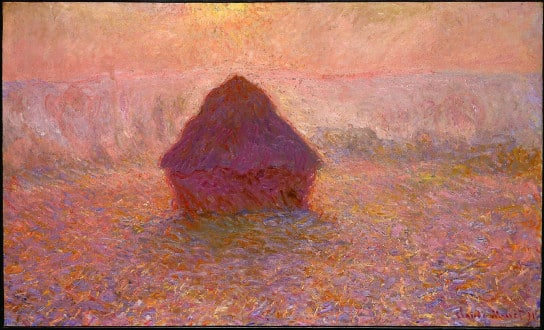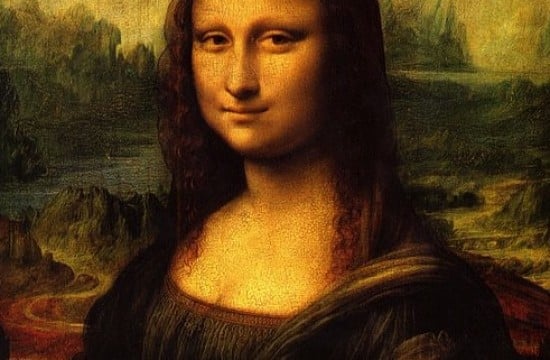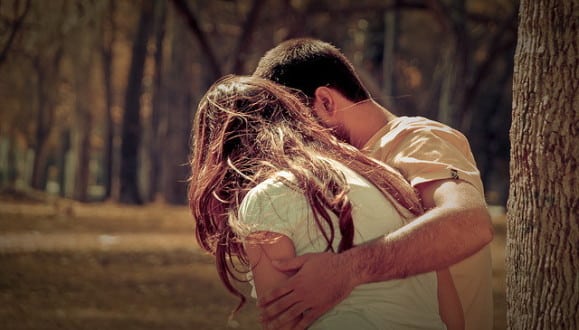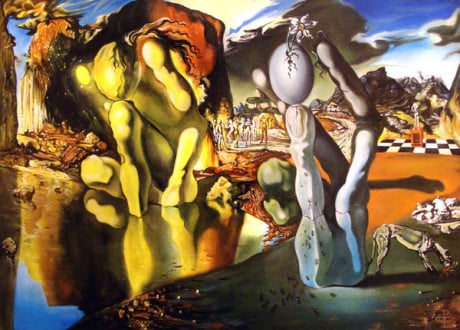Category Archives: Blog Post
Beauty – In the Eye of the Beholder?

Hand in hand a couple looking to be in their 50’s stroll through the art museum. Coming upon an area dedicated to impressionist art they stop and observe a Monet painting “Grainstack, Impression in Pinks and Blues”
“Hmm, Alice, here’s one I just don’t understand.”
Looking first at the example then at her companion, she responds,
“Why Henry, I think it is beautiful.”
It is interesting how differently people discern beauty. It’s as though each of us has an individual eye for it. But, is beauty individually or collectively determined? Let’s see what we can learn.
Why is this important? It certainly can go a long way toward explaining or at least establishing an understanding of our human differences. Such steps, if used wisely can go a long way toward allowing for disagreement while not destroying something far more valuable than a response.
Experiencing Beauty in Nature

The first image that came to mind as I wrote the title for this article was that of a warm and sunny summer afternoon with a Tinker Bell like character magically flying through a field of daisies. Pure fantasy? Maybe not. Let’s take a closer look.
The Way it Was
Most of us have pleasant memories of the Walt Disney fairy who first appeared in the Disney animated series Peter Pan. Young and old alike remain enamored with Tinker Bell. Her flights of fancy are the stuff that this title speaks about.
Experiencing = Not studying, nor psychological speak, no PhD required. Just an openness to what gifts are given to us in the ways of nature.
Beauty = An attractiveness void of logic or empirical evidence that appeals to us through our senses
In = The placement of those elements in such a way that they become beautiful. Notice that the beauty being experienced is not separate from nature, rather it is an integral part of nature; it is IN nature.
Nature: The design of the environment we reside in, including all of its processes and outcomes. Whether by grand design or happen chance and contrary to the preferences of some, in its purest form nature is a free agent. Try as we might, we have yet to be able to control nature.
The Beauty Matrix or How to Notice Beautiful World Around You

Words and phrases are the language of our mind. How we use them and the definitions we assign to them plays a critical role in how we experience our world. This may seem more complicated than it is; or is it?
Example
While visiting a friend at Rogers, Arkansas we took a drive to view some of the sights of the area. Our tour took us through a beautiful heavily wooded area. After parking, we got out and saw several trails leading off in different directions. Our friend directed us toward the trail he had in mind. For about a quarter of a mile we proceeded down a path when there, at its end stood a small, low sitting, and rather plain appearing building. Going around to the entrance side there was a sign: “Welcome to the non-denominational Chapel of the Hills. Come in and spend a moment with us.”
Connecting Aesthetics, Beauty, and Psychology

by Jim Aldrich
Before venturing forth I think it’s important that we are all on the same page as far as what it is we are talking about. For this reason I begin with a section on definitions. No big deal, there are really only three words to concern ourselves with: Psychology, Aesthetics, and Beauty.
Psychology: For our purposes here, let’s keep this simple. According to the Merriam-Webster dictionary psychology is, “the science of mind and behavior” or a means for empirically testing certain processes or theories. Its value lies in being able to point out how the mind functions in certain areas.
Aesthetics: The collection of those factors which, when combined determine the beauty of something or a lack of it.
Beauty:”… a characteristic of a person, animal, place, object, or idea that provides a perceptual experience of pleasure or satisfaction.” (en.wikipedaa.org/wiki/Beauty)
The Question:
So why should you care one iota about this topic? First, you are here for a reason. You probably weren’t web site surfing, there was a reason for your madness. Stick around and you may find that the topic has many applications. For example, it wasn’t until I began studying this topic that it had ever occurred to me to view art as a form of personal and cultural communications. Or the possibility of expanding your appreciation of different art forms.
The question here is this: “How does the science of psychology influence the use of aesthetics in creating a beautiful form of art?”
Imagine

Among the traits acquired by us humans is the ability to be judgmental. An area of this ability is beauty. When we receive a message through any of our five senses, sight, touch, sound, smell, or taste our mind responds. Usually with a spontaneous moment of awe and wonder or a simple exclamation of “wow!”
A secondary response is an opinion. When triggered most of us have an opinion, hard to believe, just ask! Some of those opinions are fact based, but it seems that many lack any forethought or rational explanation. What constitutes beauty and how is that opinion discerned? Let me explain.
You are out shopping at the mall. It’s the weekend so it is crowded. People of all shapes, sizes, colors, and attire push and shove their way past the stores. You are in no hurry, in fact, you rather enjoy people watching. And do people ever make that easy.
Psychology of Aesthetics

The world of art remains a mystery to most of us. Unless you’re one of those few who has formally studied it, the closest we come to art appreciation is “I know what I like.” A rationale that works for most of us.
Art is a form of communications. As the Canadian philosopher and prophet of the digital age, Marshall McLuhan wrote several decades ago “The medium is the message.” It is the artist that has a vision or a message waiting to be expressed. The recipient of this message is people like you and me. But, it is the art, in whatever medium it takes on, that is the message.
A tour through the vast catalogues of art show us the breadth and scope of those messages. From a simple red apple sitting among other fruits in a bowl to the panoramic view of Dante’s Inferno there is a message. The level of acceptance achieved by the artist is in direct proportion to their understanding of the psychology of aesthetics. The medium of the message.